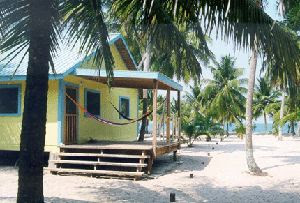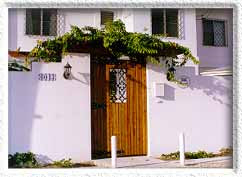 About Dragon Boat Racing ~
About Dragon Boat Racing ~Present Day: *Most dragon boats in the US are 40′ long “canoes”, powered by 20 paddlers seated two to a row, supervised by a drummer while a steerer drives it. Sprint Races usually cover about 500m (1,641′ or 1/3 of a mile = 2-3 minute race). Today’s races and clinic sessions will be in “mini-dragon boats” which seat 10 paddlers, made of fiberglass and wood trim. These minis weigh 440lbs. Dragon Boat races take place round the world from Asia, Europe, North and South America and Africa
Traditional Dragon Boats are made of various woods mostly teakwood. These will range in length from 38′ to 100′ long seating anywhere from 18-50 paddlers with a compliment of drummers, gongers and steerers. A teakwood 18 paddler dragon boat weighs 2000lbs compared with the modern 550-700lb 20 paddler fiberglass versions.
Dragon Boat racing is based on a legend about Qu Yuan (340-278BC). He served as an advisor to the emperor of the Chu Kingdom, at a time when the land was comprised of many warring Kingdoms. Qu Yuan was a sole advocate for peaceful negotiation in a cabinet that called for war as a means to protect current lands. Tiring of his call for non-warring options, the Chu Emperor exiled him from the capital. He wandered the countryside, writing poems expressing his love for his country and the people. Saddened by the news of the Chu Kingdom’s losing war, he jumped into the Mi Lo River and drowned himself. Legend has the local fisherman seeing him jump and racing to try and save him in their long slender vessels.
Dragon Boats represent the race of the fisherman in trying to save Qu Yuan
Rice Dumplings - The locals began to throw rice into the water to serve as offerings to Qu Yuan’s spirit. Soon, they would wrap the rice in lotus leaves which evolved into the rice dumplings served today during the Dragon Boat Festival.
The Traditional Dragon Boat Festival is celebrated on the 5th day of the 5th lunar month (usually in late June). Four days before the festival begins, the dragon boats are taken from their resting places and then ritually blessed by a Buddhist monk. The ceremony concludes with the “dotting” of the eyes with red paint.
The Dragon symbolizes water and the festival a request for plentiful water to help the farmlands.
This activity, which rewards teamwork, provides a unique partnership with various support groups. Besides serving as an extension for cultural education, dragon boating has grown the fastest through the Breast Cancer Survivor Community. Empowered by the positive 1996 test results from Dr. Don McKenzie of the Allan McGaving Sports Medicine Center, University of British Columbia, Vancouver, BC. Survivors from around the world took up the sport, partly for an activity and partly as a support group. Since 1996 you can now find almost 200 teams in North America! There are about 25 BCS teams in the US.
Most dragon boats in the US are 40′ long “canoes”, powered by 20 paddlers seated two to a row, supervised by a drummer while a steerer drives it. Sprint Races usually cover about 500m (1,641′ or 1/3 of a mile = 2-3 minute race). Today’s races and clinic sessions will be in “mini-dragon boats” which seat 10 paddlers, made of fiberglass and wood trim. These minis weigh 440lbs. Dragon Boat races take place round the world from Asia, Europe, North and South America and Africa
Traditional Dragon Boats are made of various woods mostly teakwood. These will range in length from 38′ to 100′ long seating anywhere from 18-50 paddlers with a compliment of drummers, gongers and steerers. A teakwood 18 paddler dragon boat weighs 2000lbs compared with the modern 550-700lb 20 paddler fiberglass versions.
Dragon Boat racing is based on a legend about Qu Yuan (340-278BC). He served as an advisor to the emperor of the Chu Kingdom, at a time when the land was comprised of many warring Kingdoms. Qu Yuan was a sole advocate for peaceful negotiation in a cabinet that called for war as a means to protect current lands. Tiring of his call for non-warring options, the Chu Emperor exiled him from the capital. He wandered the countryside, writing poems expressing his love for his country and the people. Saddened by the news of the Chu Kingdom’s losing war, he jumped into the Mi Lo River and drowned himself. Legend has the local fisherman seeing him jump and racing to try and save him in their long slender vessels.
Dragon Boats represent the race of the fisherman in trying to save Qu Yuan
Rice Dumplings - The locals began to throw rice into the water to serve as offerings to Qu Yuan’s spirit. Soon, they would wrap the rice in lotus leaves which evolved into the rice dumplings served today during the Dragon Boat Festival.
The Traditional Dragon Boat Festival is celebrated on the 5th day of the 5th lunar month (usually in late June). Four days before the festival begins, the dragon boats are taken from their resting places and then ritually blessed by a Buddhist monk. The ceremony concludes with the “dotting” of the eyes with red paint.
The Dragon symbolizes water and the festival a request for plentiful water to help the farmlands.
This activity, which rewards teamwork, provides a unique partnership with various support groups. Besides serving as an extension for cultural education, dragon boating has grown the fastest through the Breast Cancer Survivor Community. Empowered by the positive 1996 test results from Dr. Don McKenzie of the Allan McGaving Sports Medicine Center, University of British Columbia, Vancouver, BC. Survivors from around the world took up the sport, partly for an activity and partly as a support group. Since 1996 you can now find almost 200 teams in North America! There are about 25 BCS teams in the US.


 Not a narrow beach, flanked by other crowded beaches, nor steps from a beach. Ours is a pristine, sandy beach, broad and deep, and directly on the Caribbean.
Not a narrow beach, flanked by other crowded beaches, nor steps from a beach. Ours is a pristine, sandy beach, broad and deep, and directly on the Caribbean.
















 Set on a hillside of olive trees and landscaped gardens away from noisy hotels. There are three villas and four apartments furnished in a simple Cretan style. Below the sea is a large swimming pool, filled with clean sea water, furnished with sun beds and umbrellas as well as a pool side bar and a taverna serving typical Cretan food.
Set on a hillside of olive trees and landscaped gardens away from noisy hotels. There are three villas and four apartments furnished in a simple Cretan style. Below the sea is a large swimming pool, filled with clean sea water, furnished with sun beds and umbrellas as well as a pool side bar and a taverna serving typical Cretan food.



 Villa Boscardi is a tasteful Bed & Breakfast located in a safe, quiet residential area. Just a block away from the beautiful Caribbean Sea, there is easy access to the International Airport, Marinas and downtown Belize City. Guests can go for a leisurely walk or brisk morning run enjoying the cool breezes and scenic neighborhood. A lush tropical garden, and a tall white wall fence with wooden gates gives this inn a real sense of privacy.
Villa Boscardi is a tasteful Bed & Breakfast located in a safe, quiet residential area. Just a block away from the beautiful Caribbean Sea, there is easy access to the International Airport, Marinas and downtown Belize City. Guests can go for a leisurely walk or brisk morning run enjoying the cool breezes and scenic neighborhood. A lush tropical garden, and a tall white wall fence with wooden gates gives this inn a real sense of privacy.















.jpg)